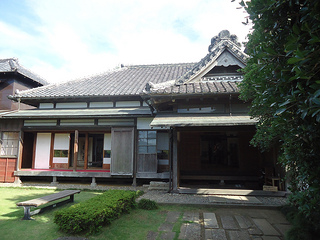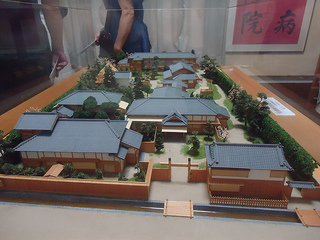- Founded: 1843, Satô Taizen
- Japanese: 順天堂 (Juntendou)
The Juntendô was a Rangaku school in Sakura, Shimousa province (today, Chiba prefecture), founded in 1843 by Satô Taizen. It was perhaps the foremost site in Edo period Japan for the study, and actual practice, of Dutch (Western) medicine.
History
The school was founded in Sakura after Satô Taizen returned to Edo from studying in Nagasaki for a time; he originally established a school in Edo, but then relocated to Sakura. His curriculum centered around not only the study of Dutch medicine, but also hands-on practice and experience, including the practice of internal surgery. The school attracted students from all over the Japanese archipelago.
Taizen's adopted son Satô Takanaka (Yamaguchi Shunkai) studied medicine in Nagasaki with the Dutch military doctor Pompe, and then came to the Juntendô, where he took in a systematic medical education, studying and developing methods which continued to play a prominent role in how medicine was practiced in the Meiji period.
Following the Meiji Restoration, the new Meiji government invited Takanaka to establish and run a medical school in Tokyo. The school, established in 1869, was called the daigaku tôkô, or "University East School," and later developed into the Medical School of the University of Tokyo; in 1873, Takanaka then also established the Juntendô-iin (Juntendô Clinic) in Ochanomizu, and Juntendô University. The latter was later inherited by Satô Susumu (Takawa Kaiseki), another adoptee into the Satô family. Meanwhile, the Sakura Juntendô passed into the hands of Takanaka's adopted son, Satô Shunkai (Okamoto Dôan)
Several of Satô Taizen's natural children, meanwhile, were adopted into other families. One such son, Matsumoto Ryôjun, studied Western medicine with Pompe in Nagasaki, was appointed to a high-ranking post within the shogunate's medical office, and later became a medical officer with the Imperial Japanese Army. Another of Taizen's sons, Hayashi Tadasu, served for a time as Japanese consul in England, and as Foreign Minister, playing a key role in the development of the UK-Japan Alliance.
Takanaka's daughter, Satô Shizu, was a pioneer in women's education, and served for a time as head of a private women's school of art. A number of prominent figures such as Enomoto Takeaki, Mitsukuri Rinshô, and Ogata Koreyoshi, meanwhile, married into the Satô family.
The building which survives today and is maintained as a historical site was originally built in 1858 on the opposite side of the street, and was just one part of a larger Juntendô complex.
References
- Plaques on-site at the Sakura Juntendô Memorial Hall.

